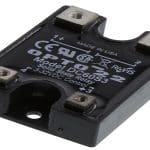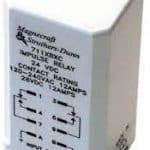Generally, both electromechanical and solid-state relays are similar, but solid-state relays electrically isolate the low-voltage input from the output that simply switches and controls an electric load. Electro-mechanical relays have a limited contact life cycle, so they have slower switch speeds, particularly in contractors and large power relays, whereas solid-state relays do not have such limitations. The solid-state relay (SSR) doesn’t have any moving … [Read more...]
Protection Relay : Working, Circuit, Types, Codes, Functions & Its Applications
A relay is a four-terminal electrical switch, used to control any electrical circuit with an independent low-power signal and also to control various electrical circuits with a single signal. The terminals of the relay mainly include; common, coil, NO (normally open) & NC (normally closed). Generally, in long-distance telegraph circuits, relays were employed as signal repeaters. After that, these were used widely in telephone exchanges and early … [Read more...]
Latching Relay : Working, Circuit, Wiring, Types & Its Applications
Generally, normal switches are used at present to open or close an electrical circuit manually. Similarly, a Relay is one type of electromechanical switch used for connecting or disconnecting two electrical circuits. But a relay utilizes an electrical signal for controlling an electromagnet to fix or separate another circuit. Relays are used where a particular circuit or various circuits needs to control with a low-power signal. Relays are available in … [Read more...]
What is Distance Relay : Theory & Its Characteristics
During the period 1809, a scientist named Samuel Thomas invented the first electrolytic relay which was a part of his electrochemical telegraph development. Later on, Joseph Henry, an American inventor asserted to have a relay invention in the year 1835 which was the improvised version of the electrical telegraph that was invented in 1831. But the relay which was currently in use today was designed by Samuel Morse in the year 1840. The mechanism of this … [Read more...]
What is an Overload Relay : Types & Its Working
All equipment has a limit to their operating range, a crane that is meant to lift 10 tones cannot lift 20 tones and if we try to do it, it will not only be unsafe, it will damage the crane itself. This analogy can exactly be applied to electrical equipment. Every electrical equipment is designed to specified load (current) and any overloading will meet the same fate as the crane. A tendency to increase output unknowingly increases the load beyond its … [Read more...]




